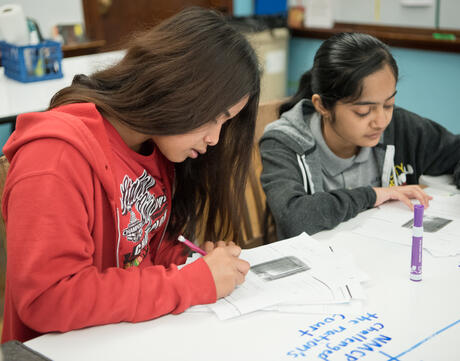
Lifted Line Poem
At a Glance
Language
English — USSubject
- English & Language Arts
- History
- Social Studies
Grade
6–12Overview
What Is a Lifted Line Poem?
This activity provides a creative way for students to engage in a text after they have worked with it as a class. In a lifted line poem, students collaborate to explore more deeply the words and experiences of first-hand accounts or fictional characters. After reading a short text, students select a line that they find meaningful and, as a class, transform these lines into a poem. The class might then collaborate to rearrange their lines in a different order that reflects a shift of mood or tone or a hierarchy of emotions, for example. This activity provides students with the time and space for individual reflection about what the text means to them as they select their lines, as well as the opportunity to engage in a class discussion while debriefing the activity that focuses on the language of the text.
Lesson Plans
How to Create a Lifted Line Poem
This activity provides a creative way for students to engage in a text after they have worked with it as a class. In a lifted line poem, students collaborate to explore more deeply the words and experiences of first-hand accounts or fictional characters. After reading a short text, students select a line that they find meaningful and, as a class, transform these lines into a poem. The class might then collaborate to rearrange their lines in a different order that reflects a shift of mood or tone or a hierarchy of emotions, for example. This activity provides students with the time and space for individual reflection about what the text means to them as they select their lines, as well as the opportunity to engage in a class discussion while debriefing the activity that focuses on the language of the text.
Variations
Unlimited Access to Learning. More Added Every Month.
Facing History & Ourselves is designed for educators who want to help students explore identity, think critically, grow emotionally, act ethically, and participate in civic life. It’s hard work, so we’ve developed some go-to professional learning opportunities to help you along the way.
Exploring ELA Text Selection with Julia Torres
On-Demand

Working for Justice, Equity and Civic Agency in Our Schools: A Conversation with Clint Smith
On-Demand

Centering Student Voices to Build Community and Agency
On-Demand














